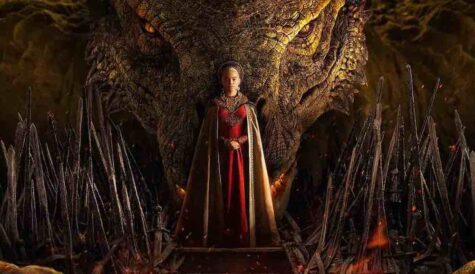Restoring the classics
Restoring classic archive material is a challenging and expensive process. But, when done well it brings new life to material that might otherwise not have seen the light of day.
Large-scale restoration projects are time-consuming and expensive, but the result for the owners of the content is a product that is often buzz-worthy and marketable and can be exploited for years to come.
The restoration of classic movies opens up new sales avenues to HD broadcasters and download-to-own services, while searching through and restoring classic news or entertainment footage can reveal new views on well-known figures or events. Similarly, restoring classic TV series can open new home entertainment revenue streams and give the programming brand in question a new lease of life with buyers.
One of the most significant restoration projects underway at the moment is being undertaken by AP Archive. It is working through a large archive hailing from United Press International Television News. As UPITN went through a revolving door of ownership, responsibility for organising the 3,500 hour archive was given to various parties, before being unearthed in a World War II bunker used by General Eisenhower.
“We’ve embarked on the largest restoration project in the world – in terms of the amount of content,” says Alwyn Lindsey, director of international archives at AP.
The technical side of the restoration process is handled by Paris-based Laboratoire Éclair. It receives the film cans, which number 20,000 in all, and cleans and restores the footage as necessary, before sending it back to the UK on HD videotape. The next challenge is getting the logging and cataloguing in order so that AP’s sales and marketing folk and, ultimately, clients know exactly what’s there. This painstaking process involves a six-strong team looking at all of the content and adding text information as appropriate. It then forms part of the overall archive and is marketed separately as The Lost Archive.
The process of working through the content is ongoing. It’s currently about two thirds complete and Lindsey says, thus far, they are finding ‘alternative shots to what’s been used so far’ from memorable events from the 60s and 70s. There’s a lot of combat footage from the Vietnam war, for example, and footage of a young Saddam Hussein. Celebrity material includes colour footage of Liz Taylor’s star-studded 40th birthday bash.
Not knowing exactly what’s contained therein can make it hard to justify a multi-million dollar project like this. “Because we don’t know exactly what we have until we see it, it was hard to put a business case together,” Lindsey says. “We couldn’t say it will generate ‘x’, but we could say there’s bound to be some great stuff in there. We can’t say we will spend a certain amount and, for example, make it back in two years, but we thought it was important not to leave it languishing.”
Getting the cash together for big restoration endeavours can be difficult and involve getting several partners on board.
UK commercial broadcaster ITV owns the Rank, Romulus, Rohauer and Korda film libraries. One of the most high-profile restoration projects of recent times was that of the classic 1948 Powell & Pressburger movie The Red Shoes, which hails from the Rank library.
“The whole restoration project has been a three-year labour of love,” says Fiona Maxwell, operations director at ITV Studios Global Entertainment. “The first twelve months were spent looking at the technical challenges and raising the money. With an old film restoration that costs US$600,000 there’s no way one party can do it on its own and you need some input from an altruistic source.”
In this case Martin Scorsese’s Film Foundation drove the fund-raising efforts and contributed alongside ITV, the UCLA Archive, The Hollywood Foreign Press and the Louis B Meyer Foundation.
For Scorsese it was clearly a passion project. “I have been delighted to hear from the many people seeing the film for the first time – and rediscovering the film – through this restoration and re-release,” he said at a London reception in April as the restored movie won the Focal International Award. “It’s served as a reminder of how important restoration is.”
Restoring a TV series or movie requires a creative as well as technical skill – in order to properly represent what the original creators had in mind.
“There are technical routes that are shortcuts, but don’t preserve the integrity of the original film,” says ITV’s Maxwell.
Having also restored The African Queen, ITV is now looking through its archives and looking at other Powell and Pressburger titles with the Film Foundation including the 1943 classic The Life and Death of Colonel Blimp. It is also talking to the British Film Institute about the possibility of restoring some early Hitchcock titles.
From its technical work on various projects JCA knows the challenges involved. It recently worked with Wellcome Film, the audiovisual arm of the Wellcome Trust charity, which has a vast archive of medical footage that it thought could be put to better use.
“If the content is on video tape it is what it is – you just need to find a method to play it back and then see what’s there,” explains JCA’s commercial director Matt Bowman. “But with this collection some was on legacy formats that were only used in medical institutions.”
In order to see all of the Wellcome content JCA had to find and use the only remaining machine capable of playing the oldest video formats.
Angela Saward, curator at The Wellcome Trust says that from her perspective the first challenge was deciding what, of the 5,000 moving image items, should be restored. “The first thing we needed to do was catalogue the content,” she says. “From there we created a ‘greatest hits’.”
Unlike with a classic movie, the remit was to make the content was viewable by a scholarly and academic audience, it did not need to remain true to a particular artistic vision. “It’s not imperative that the restored content is perfect, but it is imperative that you can see what’s going on,” says Bowman. Similarly, with another JCA project for Pathe, retaining some of the grainy and aged look is key.
Restoration can also give a new life to classic series. Later this year FremantleMedia will launch a restored version of its seminal factual series The World at War.
For RTL-owned producer and distributor FremantleMedia, there is a clear commercial case for relaunching a restored version of the 37-year-old series. “For the past four or five years we’ve found we have sold more and are making more per unit with this series – it’s so strong editorially that it sells and sells and sells,” says Pete Kalhan, senior VP, home entertainment and archive sales at FremantleMedia. “Now we want to put it out on Blu-ray and creating HD masters means that it can go to new broadcasters globally.”
The scale of the task, the cost of which is ‘significant six figures’, is underlined by the fact that each of the 26 one-hour episodes needs 100,000 individual fixes. Broadcasters will be able to show an HD version of the series for the first time from September and AETN’s History is one of the broadcasters understood to be interested. The restoration started last November and will take nine months.
FremantleMedia is now looking at other shows in its vast catalogue that could benefit from restoration. Sitcoms like Rumpole of the Bailey are being considered, but it is primarily drama that looks next for the restoration process with cop series The Sweeney and Minder seen as good prospects.
As well as being expensive and time consuming, getting the right look is a balancing act and one pitfall is making restored content look too new and improved.
“It’s not good archival practice for everything to look too clean,” Saward notes and FremantleMedia’s Kalhan agrees. “You can’t be seen to over-restore, the end product can’t look sanitised and clinical, and it has to remain faithful to the original period.”



